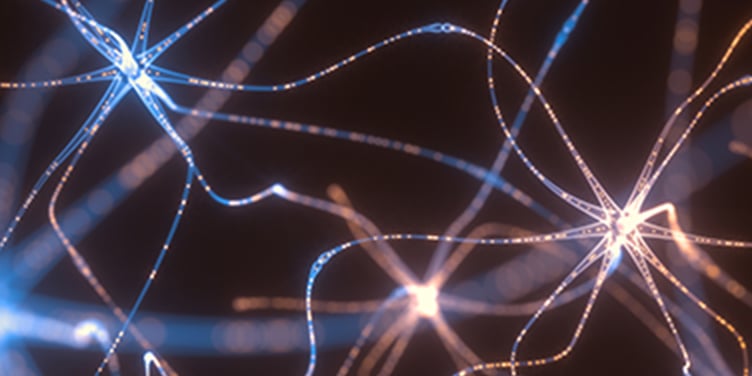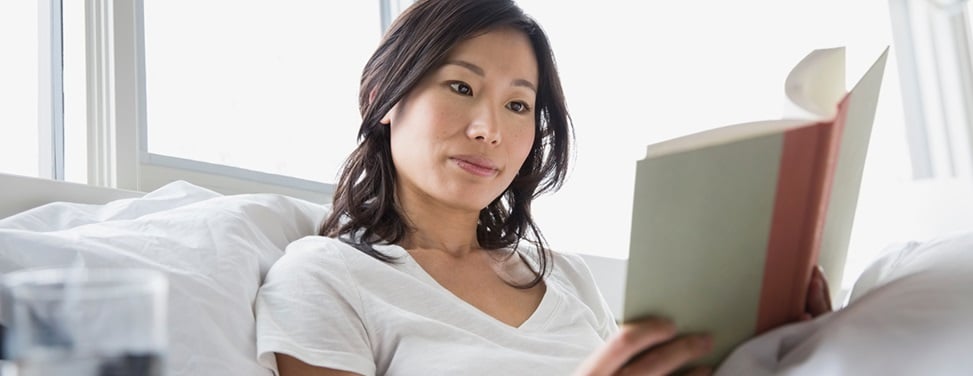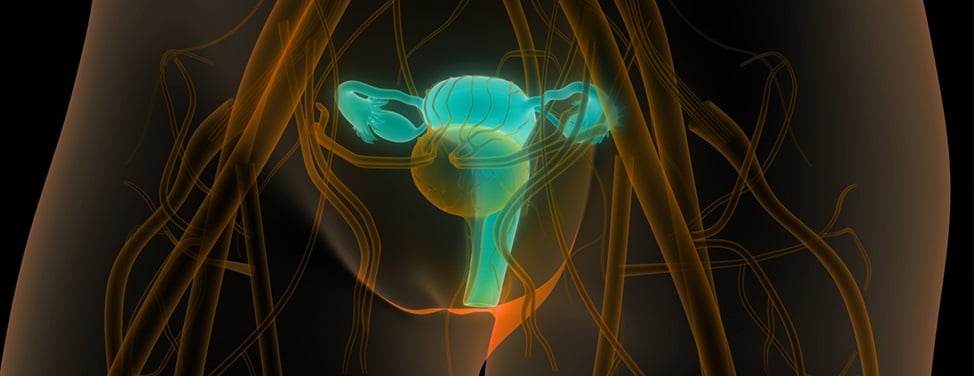Urinary Incontinence

Overview
Urinary incontinence is the accidental leakage of urine – a condition that affects millions of people of all ages, though it's most common in older adults and women. Depending on the type and severity, it can be a minor inconvenience or a significant disruption to daily life. Unfortunately, many people with incontinence feel embarrassed and never seek help. The good news is that we have effective treatments to manage the problem.
Our approach to incontinence
A leader in the field, UCSF offers innovative, compassionate care to women and men with incontinence. Our team of urologists, gynecologists, urological surgeons and physical therapists has expertise in all types of bladder control issues and offers the full spectrum of treatments, including behavioral therapies, medications, electrical stimulation and surgical procedures.
Types of incontinence
To determine the best treatment, it helps to know which variety of incontinence you have. Types include:
- Stress incontinence. You leak urine when certain actions – such as coughing, sneezing, laughing, exercising or lifting something heavy – create pressure on the bladder. Stress incontinence is more common in women, usually as a result of pelvic floor changes following childbirth. In men, it's usually caused by radiation therapy or surgery for prostate gland problems.
- Urge incontinence (also known as overactive bladder). You feel a sudden, intense need to pee that you can't control long enough to reach the bathroom. You also may need to urinate frequently during the day or at night. This is the type of incontinence that most often affects men, and it's usually related to an enlarged prostate.
- Overflow incontinence. The bladder doesn't fully empty, so small amounts of urine leak out frequently.
- Mixed incontinence. A combination of stress and urge incontinence, this is most often seen in women.
Causes of incontinence
Many factors can lead to urinary incontinence. These include:
- Benign prostatic hyperplasia (enlarged prostate)
- Changes in the body resulting from childbirth or pelvic surgery
- Damage to bladder nerves
- Diabetes
- Medication side effects
- Obesity
- Severe constipation
- Urinary tract infections
- Weakened pelvic floor muscles
Some people have continence problems because of factors unrelated to the urinary tract. If someone can't walk to the bathroom, or if their arthritis makes clothing removal difficult, bladder control may gradually be lost.
Awards & recognition
-

Among the top hospitals in the nation
-

Best in Northern California for urology
-

One of the nation’s best for obstetrics & gynecology
Signs and symptoms
The sign of incontinence is the involuntary leakage of urine. This may occur after certain actions, such as sneezing or laughing, or following a sudden, uncontrollable urge to urinate. You may pass just a few drops or a large amount.
Waking up frequently at night to urinate, bed-wetting, or frequently needing to urinate during the day can also indicate a bladder control problem.
Diagnosis
The condition is diagnosed mainly on the pattern of symptoms. Your provider will also ask questions about your general health, your history of incontinence, past surgeries, illnesses and any medications you're taking. A physical examination, including a pelvic exam, will be done, and a urine sample will be tested.
You may be asked to keep a urinary diary (a record of daily urination, urine accidents and fluid intake) to help your provider discern patterns and establish the working diagnosis.
Sometimes more complicated tests are needed to make the diagnosis or to guide treatment.
Treatment
Treatment depends on the type of incontinence you're experiencing. In general, urge incontinence is managed with medications, while stress incontinence usually requires a surgical procedure. However, there are many ways of improving bladder control and your provider may recommend one or more of the following:
Lifestyle modifications
You may enhance bladder control by making certain changes, such as losing weight or avoiding caffeine, alcohol and acidic foods, all of which can stimulate the bladder. Also helpful: scheduled toilet trips (whether or not you need to go) and a technique called double voiding (after urinating, wait a few minutes and then try to urinate again so that you fully empty the bladder).
Behavioral treatments
Behavioral treatments can help you strengthen your pelvic floor muscles, which play an important role in bladder control. These techniques include:
- Pelvic muscle exercises, also known as Kegels, tone the muscles that support the pelvic organs. Strength in these muscles can help you suppress the urge to urinate. Because you can't see your pelvic floor muscles, you may find it hard to locate them or to determine whether you're doing the exercises correctly. You can ask your care provider or a physical therapist for guidance on this.
- Biofeedback can support proper performance of Kegels. Computer graphs and audible tones help you locate the pelvic floor muscles and learn whether you're doing the exercises correctly.
- Bladder training helps stretch the bladder muscle so it can hold more, allowing you to lengthen the intervals between trips to the bathroom. This technique can diminish leakage and the sense of urgency.
Medications
Urge incontinence is often treated with medications that make the bladder relax. They don't cure the problem, but they can reduce or even eliminate bladder control problems, especially for men with an enlarged prostate.
Vaginal inserts
Vaginal inserts, including pessaries, are used to treat stress incontinence in women. These devices are placed in the vagina to support the uterus, bladder, urethra and rectum. Several types are available, and one can be custom-fit to meet your needs and anatomy.
Electrical stimulation
A small device emitting low-grade electrical current is inserted into the vagina or anus to stimulate contraction of weak pelvic muscles. The treatment can be done at home. Regular sessions can complement your pelvic muscle exercise regimen.
Nerve stimulation
In urge incontinence, the nerves regulating the bladder can become hyperreactive, sending strong signals to empty the bladder before it's full. Nerve stimulation therapies jam the pathways that transmit these abnormal messages. Both types in use – percutaneous tibial nerve stimulation (PTNS) and sacral neuromodulation therapy – send electrical impulses to the sacral nerves, which control the bladder.
Botox bladder injections
Botulinum toxin, better known as Botox, is used to treat urge incontinence that hasn't improved with medications or other conservative therapies. It works by paralyzing the bladder muscle, which decreases unwanted bladder contractions. Maximum relief is usually seen seven days after injection and normally lasts six to 12 months. Repeat injections are often needed.
Surgery
Surgery offers a long-lasting treatment for symptoms of stress or mixed incontinence. There are several procedures, some minimally invasive, some requiring open (traditional) surgery. They include:
- Sling procedures. A sling made of synthetic mesh or your own tissue is placed under the urethra (the tube that allows the bladder to drain) and the area where it connects to the bladder. This helps to keep the urethra closed when you cough or sneeze.
- Injections. Body-safe synthetic materials are injected into the tissue around the urethra to support and tighten the opening of the bladder neck – the thick muscle that connects the bladder to the urethra. The procedure can be done in your doctor's office with local anesthesia. It may take two or three (or more) injections to reduce symptoms.
- Colposuspension. This procedure lifts the bladder neck and stitches it in place to restore its proper position and support the urethra. It can be done as an open surgery or a minimally invasive procedure (laparoscopically).
- Artificial urinary sphincter. This surgery for men involves implanting a small, fluid-filled ring around the bladder neck to keep the urinary sphincter shut until there's a need to urinate. To urinate, you press a valve implanted under your skin that makes the ring deflate and allows urine to flow from your bladder.
UCSF Health medical specialists have reviewed this information. It is for educational purposes only and is not intended to replace the advice of your doctor or other health care provider. We encourage you to discuss any questions or concerns you may have with your provider.















